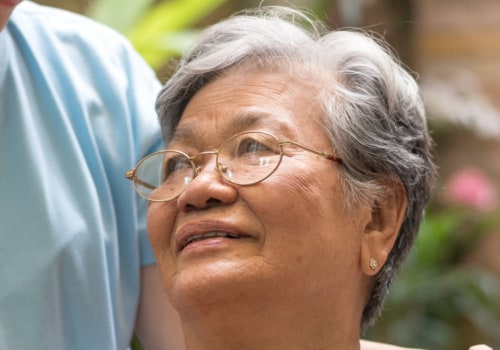After a quick review (see Sims and Fassbender, this issue), we synthesized the findings of five studies that examined the key elements, whether perceived or proven, of effective palliative care at home, relevant to the Canadian health context. These studies include a systematic review, an in-depth qualitative study of palliative care programs, qualitative and quantitative perspectives of potential patients and caregivers, and qualitative perspectives of palliative care providers. An iterative and cumulative qualitative approach was used to rigorously consider the results of each study and identify the themes common to each one, 30,31 Analysts (H, S. The authors participated in four of the five reviewed studies and have a thorough understanding of these data.
The summary notes were compared and contrasted throughout the discussion to derive a set of agreed common elements, represented in all studies. The findings of the original studies and the elements synthesized were examined and discussed at an international symposium of palliative care researchers, providers and patient advocates to ensure truthfulness. 32 In this study, in-person interviews were conducted with 107 administrative and frontline staff involved in palliative care at home in Ontario. 38 These participants included nurses, physicians, personal support workers, spiritual and grief counselors, and administrators from both rural and urban.
Respondents were asked: What is the most important thing for end-of-life care? Interviewers followed up with probing or clarifying questions to gain deeper meaning and explore respondents' past experiences. The responses were analyzed using a qualitative phenomenological approach to derive issues that represent the essence of end-of-life care from the perspective of providers. The analysis resulted in 40 unique themes, which were grouped into 9 concepts formulated. Most respondents mentioned several topics, and many (21%) explicitly stated that care should incorporate a multifactorial approach that focuses attention exclusively on a single need, i.e.
pain management, is not enough to drive quality. This requires attention to the creation and support of interprofessional teams (including nurses, social workers, pharmacists, psycho-spiritual counselors, grief workers, etc.) to comprehensively address the social, mental, physical and spiritual dimensions of death. Having an interprofessional team can help customize care plans and address diverse patient needs. This holistic approach to care will make patients feel more at peace, resolve their personal issues, improve quality of life and ultimately alleviate all forms of suffering.
The Hospice Approach Requires Care from Every Angle. Nonprofit According to the Washington Post, for-profit hospice agencies spend less on nursing per patient, are less likely to send a nurse to a patient's home in the last few days of life, are less likely to provide more intense levels of care to patients experiencing crisis, and have a higher percentage of patients drop out of care. LocalityOne of the most important traits of a hospice provider is their location for their loved one. You want resources and nurses to be around at all times.
For hospice agencies that cover large radios, it could be a while before someone arrives if a crisis arises. Ideally, they are always within a 20-30 mile radius. Family Bereavement Services Hospices can also provide you with care after the death of a loved one. Through the agency, you can seek personal counseling and attend support groups up to 13 months after death.
They can help you address all aspects of grief and guide you through the grieving process. Connected with local social workersSocial workers are also part of hospice care. There is a lot to balance when a loved one is in hospice care, and social workers can provide information about community resources for both the family and the patient, while also instructing about insurance and the many other aspects of hospice care. Spiritual SupportFor many, a spiritual life is a fundamental component of a fulfilling life.
Hospice providers must be responsive and adapt to these aspects. Look for an agency that reflects this and provides spiritual counselors. Volunteer SupportA hospice agency with a strong network of volunteers is a great sign that you are also able to offer social support to your loved one. Volunteers sit and talk to the patient, can run errands, take care of household chores, and more.
Hospice goes beyond just providing health support. Qualified NursesFind a provider with nurses who will skillfully evaluate, monitor, and treat your loved one's symptoms. Ideal nurses also educate you and your family about your loved one's illness and what they can do. Hospices care for people where they live.
While some hospice care is provided in hospitals, hospice centers, or nursing homes, most patients receive care in the place they call home, which is where most people would prefer to be. Hospice care is for people nearing the end of life. Services are provided by a team of health professionals who maximize the comfort of a terminally ill person by reducing pain and addressing physical, psychological, social and spiritual needs. To help families, hospice care also provides counseling, respite care, and practical support.
Routine hospice (RHC) care is the most common level of hospice care that is usually provided in the patient's home. When a disease has advanced beyond the possibility of cure, research has shown that early enrollment in palliative care helps patients live longer with a better quality of life (Connor, Pyenson, Fitch, Spence & Iwasaki, 200. Other benefits include family assistance that can decrease complicated grief and increase preparation for the death of a loved one. Patients who achieved a sense of inner peace and were seen by an oncologist who saw them as people were more likely to have a better quality of life.
Hospice referral is considered when a doctor believes that the patient's life expectancy is less than six months if the disease runs its natural course. If the goals and wishes of the patient or decision makers are in line with hospice principles, the doctor may make a formal referral. Mercedes Pacheco is the Medical Director of Hospice Services at HopeHealth, a non-profit provider of hospice, palliative care, home care and support services for dementia and Alzheimer's, serving Massachusetts and Rhode Island. Once the criteria for a terminal diagnosis are established and the patient and family consent to hospice care, a certification from two physicians must be signed certifying the terminal illness and the suitability of hospice.
The contributions of these team members vary between hospices and depend on the patients' plan of care. As a general guideline, hospice is recommended for a patient with an incurable terminal illness with a life expectancy of six months or less if the disease runs its normal course. The primary goal of hospice is to provide a peaceful, symptom-free and dignified transition to death for patients whose illnesses have advanced beyond cure. Hospice agencies often have relationships with local assisted living facilities that can accommodate hospice patients, usually at an additional cost.
In general, most medications can be continued as long as they do not interfere with patient comfort and are not taken as a potential cure for the condition that qualifies for hospice. To qualify for hospice coverage through Medicare, a doctor must certify that life expectancy is probably six months or less. But hospice care can be provided as long as the person's doctor and palliative care team certify that the condition continues to limit life. An essential component of hospice care is the interdisciplinary team meeting (or IDT) that takes place every two weeks.
Any disease considered to be end-stage is not reversible, and its subsequent treatment represents more burden than the benefit that can be considered for hospice referral. The hospice certificate is usually signed by the referring physician and the hospice medical director. . .












